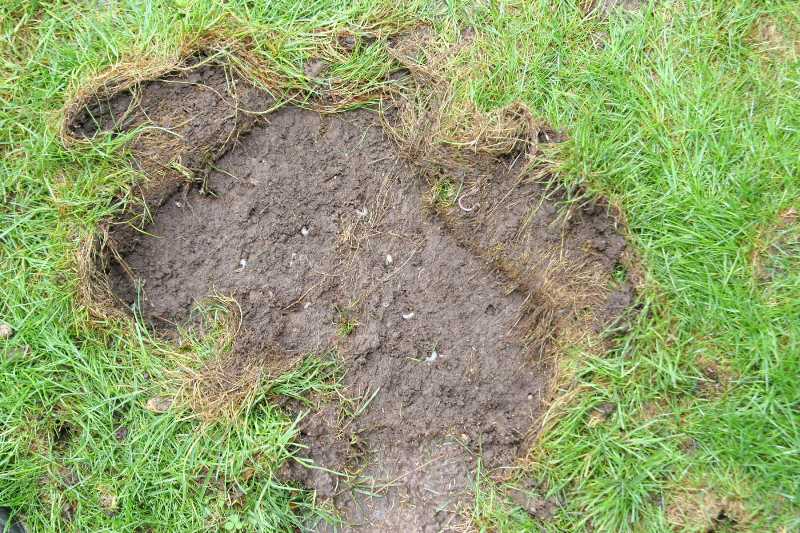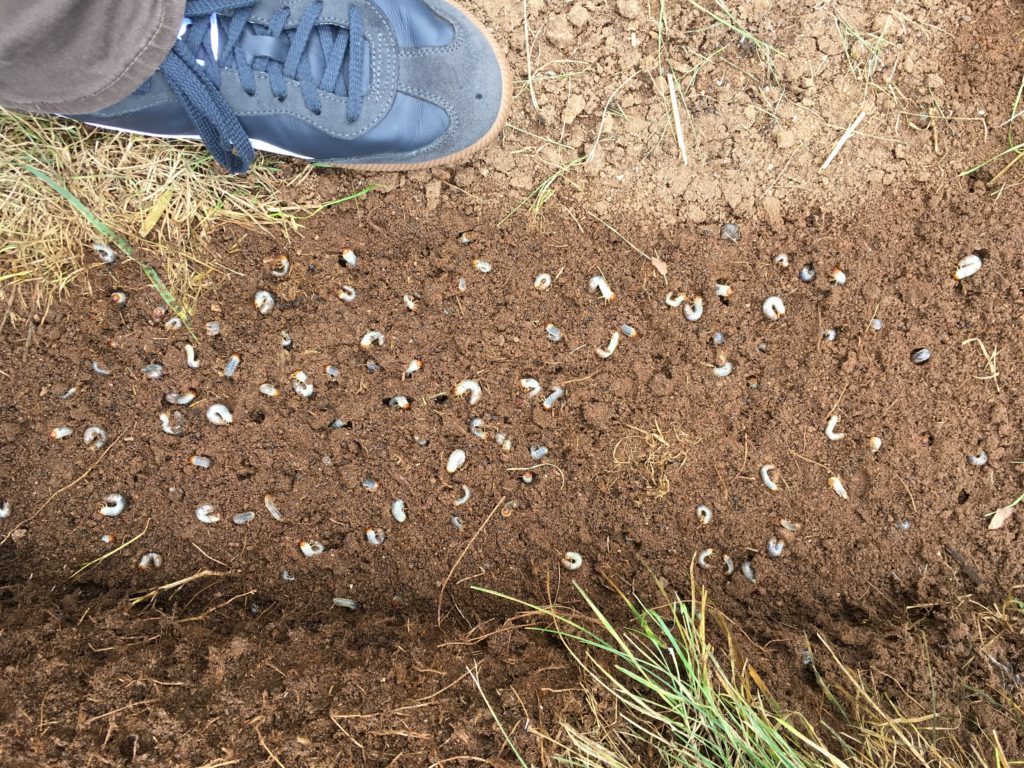This time, we’re going to talk about How To Treat Grass Grub In Lawns. There is a lot of information about How to get rid of lawn grubs on the internet, of course. Social media are getting better and better quickly, which makes it easier for us to learn new things.
How to Kill Grubs in Your Lawn and How to Kill Grubs in Your Lawn are also linked to information about How to Kill Grubs in Your Lawn. As for other things that need to be looked up, they are about How to Kill Grubs in Your Lawn and have something to do with How to Kill Grubs in Your Lawn.

13 Things You Should Know About How To Treat Grass Grub In Lawns | How to Kill Grubs in Your Lawn
- You will want to fertilize your lawn with Safer® Brand Lawn Restore® Fertilizer to keep it thick and healthy, and also be sure you’re mowing your grass down to a minimum of two inches in height — beetles prefer to lay their eggs in thin, sparse grass. It will be necessary to implement an infrequent watering schedule, too. When you do water your lawn, though, make sure to water it deeply to promote deeper and stronger growth of grass roots. - Source: Internet
- Left unchecked, white grubs in your lawn will continue their destructive course and will eventually sever the roots of the grass so badly, it will be unable to regrow. Having your yard re-turfed is expensive and time consuming. Protect your lawn by using OMRI Listed® and compliant Safer® Brand products for a healthy and organic lawn. - Source: Internet
- As a rule of thumb, a healthy lawn is able to withstand up to five grubs per square foot. If you find more than five grubs in this patch of grass, then you have an infestation that requires a pest control treatment. By testing multiple areas of your lawn, you’ll have a better idea of just how extensive the problem is and what you’ll need to do to get rid of the grub worms. If you only find a few, then it may be as simple as hand picking them from the affected areas, and then applying Safer® Brand Lawn Restore® Fertilizer and doing a deep watering. - Source: Internet
- Your natural inclination when you notice lawn damage caused by grubs might be to rip up the patches of grass that are browning and replace them with new lawn turf. This is, however, not the correct or sustainable solution. You can instead simply treat this area of lawn with a pest control treatment and begin your lawn care regime again. Once the grubs have been killed by the pest control solution, this will promote root growth in the grass, and it will begin to heal and regrow. - Source: Internet
- There are certain signs to watch for to know if you’re faced with a grub problem. First of all, you may have noticed other wildlife being attracted to your lawn. This wildlife activity in your yard likely indicates you have a grub worm problem. Animals, such as raccoons, skunks and birds, enjoy grubs as a main part of their diet. If you’re serving up an assortment of tasty lawn grubs, then these creatures are going to get digging — which can also cause damage to your grass. - Source: Internet
- The lawn grubs you’ll likely find are small, white, worm-like pests that live in the soil and feast on organic matter in the lawn. They will eat anything within the soil that’s in their path, including the roots of grass. By devouring the grass roots, they begin to kill off patches of your lawn, leaving it brown in certain areas. Grubs will continue to expand their destruction as they move under the lawn’s surface. - Source: Internet
- During the late summer and early fall, you may begin to notice lawns turning an unattractive shade of brown in certain unsightly, dying patches. The likely explanation is the grass is being destroyed by hungry, thriving grub worms living below the surface of the lawn. If this has happened in your lawn, there is good news. These pests can be controlled, and your lawn can be restored back to its healthy state by getting rid of grub worms. - Source: Internet
- Secondly, you will notice dying patches of grass in your yard that are easy to pull up by hand. This is a clear indicator the roots of the grass have been destroyed as these patches are no longer thriving in the soil. You may have previously attributed dry, dying patches of grass to under-watering or environmental conditions. However, it is likely a grub problem, which is very common in North America. - Source: Internet
- Biological predators, like birds, raccoons, moles and more, are an option when it comes to grub control for lawns. You can choose to leave your soil exposed to welcome animals to devour the pests. For example, you can use bird feeders to attract birds to your yard to feast on the grubs. But do keep in mind, animals will dig holes in your lawn, which can cause further damage to your yard. - Source: Internet
- To know just how badly your lawn has been impacted, it is recommended to dig up one square foot of lawn. You’ll be able to easily lift up the browning patch of grass as it will pull up much like a carpet. Dig through the exposed section of soil and look for the white grub worms. You’ll notice these pests will curl themselves into a “C” shape when disturbed. - Source: Internet
- The adult female moth flies around at night and is attracted to well maintained lawns. She lays her eggs into soft cocoons on the awnings of your house, under side of leaves and even your clothes line. These cocoons look like this – - Source: Internet
- The best way I’ve found to prevent Grubs organically, without using any chemicals or products is to plant Turf Type Tall Fescue. This modern grass type works specifically well for individuals living in the Midwest. It has a really deep root system, and can get by with one deep watering every 7 days, even in periods of hot, dry weather. The Turf Type Tall Fescue, as found in our Tuff Turf Grass Seed, is also less likely to show signs of Grub Damage, because its roots are so extensive that a little feeding by Grubs doesn’t usually cause many problems. Shallow rooted grasses, like Creeping Bentgrass, show a lot of damage from Grubs because there are far less roots to help it survive. - Source: Internet
- Additional info – Lawn grubs are more likely to occur after rainfall. This is because the grass is lush and green. Therefore keep an eye out for the moths and cocoons after rain. - Source: Internet
 Here are a few tips to help you find information about Fall turf grass problems? Grubs might be the culprit:
- Look for good places to get information about Lawn Beetle Identification. This can be done in libraries, on websites, or even by paid journalists.
- When looking for information about How To Get Rid Of Grubs, it's important to know that there are different kinds of online sources, like Google and YouTube. Social media sites like Facebook and Twitter are also good places to look for information about What Causes Grass Grubs.
Here are a few tips to help you find information about Fall turf grass problems? Grubs might be the culprit:
- Look for good places to get information about Lawn Beetle Identification. This can be done in libraries, on websites, or even by paid journalists.
- When looking for information about How To Get Rid Of Grubs, it's important to know that there are different kinds of online sources, like Google and YouTube. Social media sites like Facebook and Twitter are also good places to look for information about What Causes Grass Grubs.Video | How To Treat Grass Grub In Lawns
To get the best information about Signs Of Grubs On Lawn, you should read to find out how true each source is.
This article has a few videos from different places about Lawn Grubs & How to Treat Them that will help you learn more about it. The Internet is a great place to find out about a wide range of things.
## Here are some crucial points concerning how to treat grass grub in lawns:- How To Treat Grass Grub In Lawns
- What Causes Grass Grubs
- How To Kill Grubs In Your Lawn
- Soapy Water Lawn Grubs
- Signs Of Grubs On Lawn

With so many websites and forums that talk about how to treat grass grub in lawns, it shouldn’t be hard to find what you need.
Most people are used to getting information about What Causes Grass Grubs in a very different way than this. It lets you look at the information about How to get rid of lawn grubs and how it can be used in more detail.
 ways to put information about Lawn Grubs & How to Treat Them in a way that looks good and is useful. They can be used in business and marketing, and they can also be used to talk about How to Kill Grubs in Your Lawn. So, we also give you some pictures about Fall turf grass problems? Grubs might be the culprit.
ways to put information about Lawn Grubs & How to Treat Them in a way that looks good and is useful. They can be used in business and marketing, and they can also be used to talk about How to Kill Grubs in Your Lawn. So, we also give you some pictures about Fall turf grass problems? Grubs might be the culprit.
In the end, this article gives a summary of What Causes Grass Grubs. Also talked about are How to Control Grubs Without Chemicals and Lawn grubs – is your lawn under attack?, which you can use to compare how much you know about Lawn grubs – is your lawn under attack?.